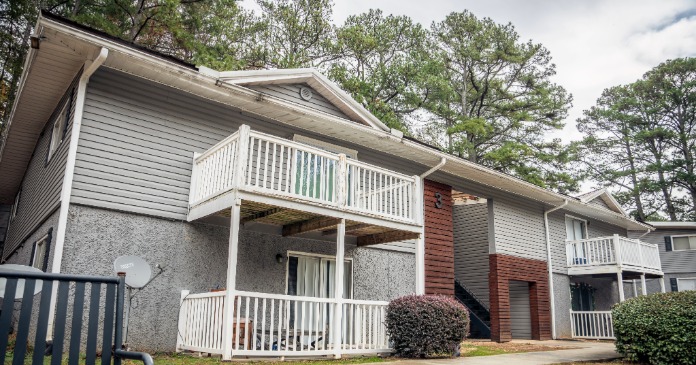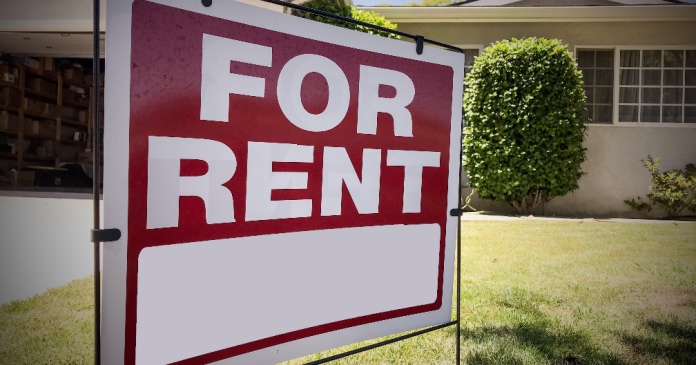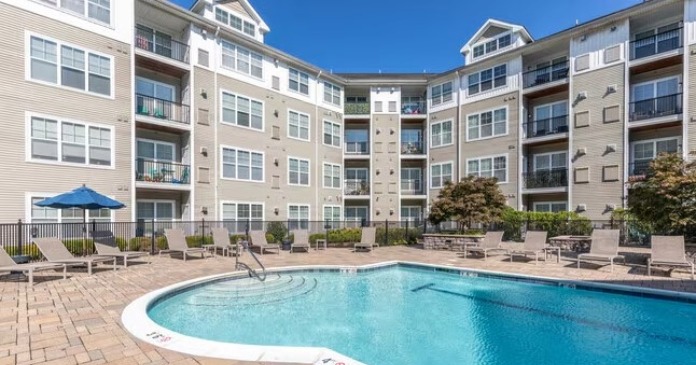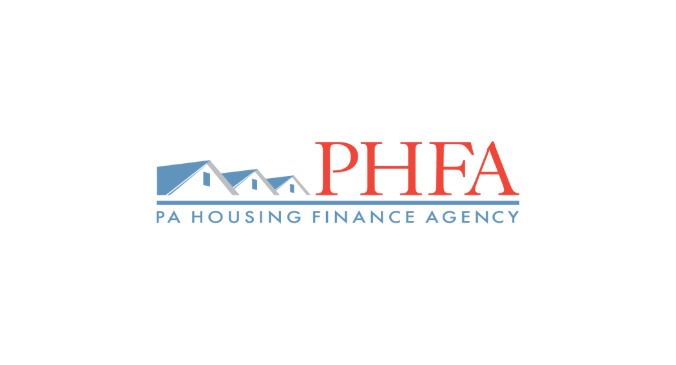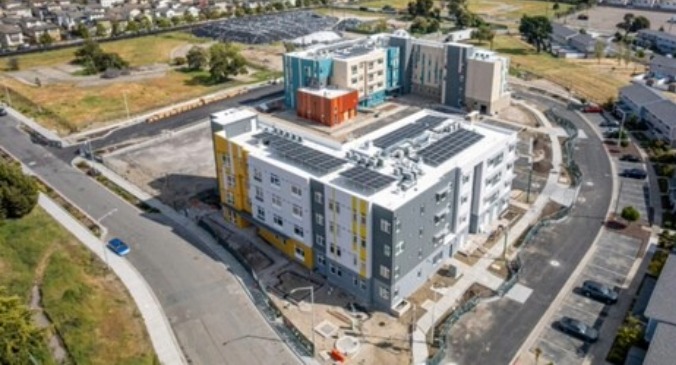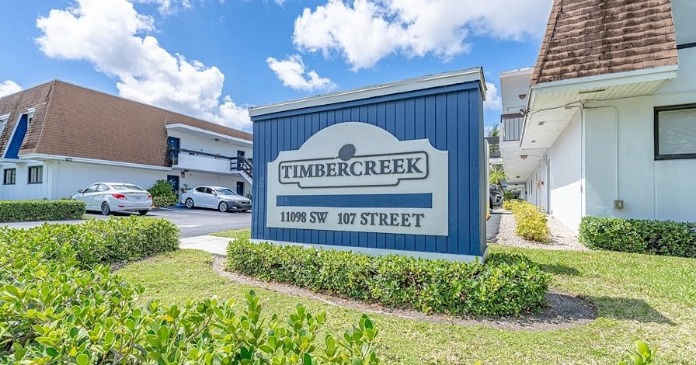The report, titled The State of the Nation’s Housing 2025, from the Joint Center for Housing Studies (JCHS) of Harvard University seeks to present a comprehensive assessment of the state of rental housing in the United States, highlighting the challenges related to affordability, supply, and the broader economic and policy environment.
While this is the 2025 report, the cost-burden analysis is based on data from 2023. This is the most recent year for which the Census Bureau’s detailed income and expense data file is available. However, Apartment List reports that rents have been falling year-over-year since June 2023, while Yardi Matrix reports that rents have risen about 1 percent year-over-year since the fall of 2023. In addition, the Bureau of Labor Statistics reports that median hourly earnings for non-supervisory employees rose 5.3 percent from December 2023 to April 2025, easily outpacing rent increases over that time, so the affordability problem may not currently be as bad as pictured in the JCHS report.
The affordability challenge
The JCHS reported 2023 marked the third consecutive year of record-high cost burdens among renter households. As of that year, 22.6 million renters—half of all renter households—were cost burdened, meaning they spent more than 30 percent of their income on housing. Of these, 12.1 million were severely burdened, allocating over half their income to rent and utilities. The prevalence of cost burdens has increased in 43 states and in 89 of the nation’s 100 largest metro areas since 2019, with more than half of renters burdened in 13 states and half of large metros. The crisis is most acute in Florida and Western states, where recent rent increases have been especially pronounced, but even in the metros with the lowest burden rates, a significant share of renters—at least 39 percent—face burdensome housing costs.
Affordability challenges are most severe for lower-income renters. In 2023, 83 percent of renters earning under $30,000 were cost burdened, with two-thirds experiencing severe burdens. However, the problem is moving up the income scale: 70 percent of renters earning $30,000 to $44,999 were cost burdened, up 15 percentage points since 2001, and cost burdens among those earning $45,000 to $74,999 have doubled to 45 percent over the same period. Even among higher-income renters (over $75,000), 13 percent are now cost burdened, reflecting rent growth that has outpaced income gains. Notably, 36 percent of full-time working renter households were cost burdened in 2023, up from 25 percent in 2001.
Residual incomes—the funds left after paying for housing—have fallen sharply, particularly for the lowest-income renters. By 2023, renters with annual incomes under $30,000 had a median of just $250 per month left for all other necessities, a 55 percent drop since 2001. This financial squeeze forces many households to make difficult trade-offs, such as reducing spending on food, healthcare, or retirement savings, or moving to less suitable housing farther from jobs and services.
Housing demand has remained strong
Despite these affordability challenges, rental demand has surged. In 2024, the number of renter households grew by 848,000, and by the first quarter of 2025, the annual increase reached 1.1 million, pushing the share of renting households to 34.9 percent. Demand was especially strong among higher-income households unable to transition to homeownership due to high prices and interest rates. The number of renter households earning at least $75,000 rose by 1.1 million in 2023 alone, continuing a decade-long trend. These higher-income renters now represent a record 33 percent of all renter households. Growth was also notable among people aged 35–44, a group traditionally associated with first-time homebuying, as well as among older adults and young adults under 35.
The rental housing stock is shifting toward higher-rent units. Between 2013 and 2023, the number of units renting for under $1,000 per month (adjusted for inflation) fell by more than 30 percent, from 24.8 million to 17.2 million. In contrast, units renting for $2,000 or more nearly tripled, from 3.6 million to 9.1 million. This reflects both the loss of existing low-rent units—through demolition, conversion, or rent increases—and the focus of new construction on higher-income segments. The median asking rent for new apartments completed in late 2024 was $1,900, affordable only to households earning $76,000 or more. Over two-thirds of new apartments had asking rents of at least $1,650, and 41 percent exceeded $2,050.
A wave of multifamily construction in recent years brought 608,000 new units online in 2024, the highest level in nearly four decades. This supply surge helped moderate rent growth and increase vacancies in some markets. Nationally, asking rents in professionally managed apartments rose just 0.8 percent year over year in early 2025, with wide variation by region. Rents grew fastest in the Midwest and Northeast, while they declined in many Southern and Western markets, especially those with the most new construction. However, this construction boom is ending: multifamily starts fell 25 percent in 2024, and the number of units under construction dropped 22 percent from the previous year. With new supply ebbing and demand remaining strong, the report anticipates that rental markets will tighten again, likely leading to renewed rent increases.
Single-family rentals have become an increasingly important part of the rental market. Construction of single-family rental homes reached a record high of 93,000 units in 2024, more than double the number built in 2019. Single-family rentals now constitute 22 percent of all rental starts and provide larger homes, often in suburban or rural areas with fewer rental options. These units tend to be more affordable on a per-bedroom basis than new apartments, but their larger size means higher monthly rents, attracting higher-income households. Investor activity in single-family rentals has increased, with investors purchasing nearly a third of single-family homes sold in early 2025, raising concerns about reduced opportunities for individual homebuyers.
The apartment business also faces challenges
Operating challenges for apartment owners have intensified due to high interest rates, rising costs (notably for insurance, repairs, and property taxes), and slower rent growth. Operating incomes have increased only modestly, and apartment values have declined, reflecting higher capitalization rates and subdued investment activity. Multifamily mortgage delinquencies have risen, particularly for loans with shorter terms, and new construction is being constrained by both economic feasibility and the availability of financing.
Federal rental assistance remains insufficient relative to need. Only about one in four income-eligible renter households receives a subsidy and, as of 2021, a record 8.5 million very low-income renters experienced severe cost burdens or inadequate housing. Funding shortfalls threaten the renewal of existing Housing Choice Vouchers, and public housing faces a $90 billion maintenance backlog. The Low-Income Housing Tax Credit program continues to support affordable housing, but loopholes allow some units to exit the program early, and losses of affordable units are mounting in rural areas as well. State and local governments are innovating with new financing mechanisms, zoning reforms, and tenant protections, but their efforts are often limited by the scale of federal funding.
Homelessness has reached unprecedented levels, with 771,480 people experiencing homelessness in January 2024, a 33 percent increase since 2020. Chronic and unsheltered homelessness have also risen sharply. The report states that some communities have successfully reduced homelessness using “housing first” strategies, but that overall progress is threatened by delays in federal funding and policy shifts away from such approaches.
Looking ahead, the report underscores that rental affordability will remain a central challenge. The slowdown in new construction, combined with continued strong demand, is likely to tighten rental markets and put upward pressure on rents. Federal policy and economic conditions will play a critical role in shaping the future of rental housing. Proposed cuts to federal housing resources would further weaken assistance programs and exacerbate the crisis. The report concludes that addressing the affordability and supply challenges in rental housing is urgent, as the consequences of inaction would be detrimental to both households and the broader economy.
The full report is available here.




